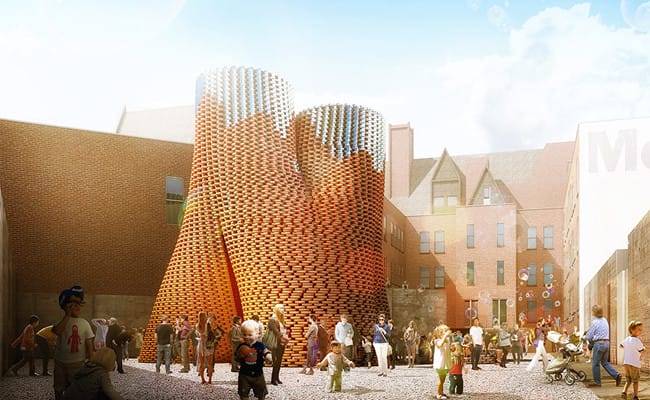The mushrooms are not just cute little fungi that you may savor in a pot pie. Nor are they just harmful little fungi that you would never put in your food. Scientists have discovered a way of making bricks out of these little mushrooms to create huge buildings.
Back in 2014, an architectural team from New York called “The Living” designed the world’s first mushroom brick tower. The bricks were made from fibrous fungi grown on agricultural waste.
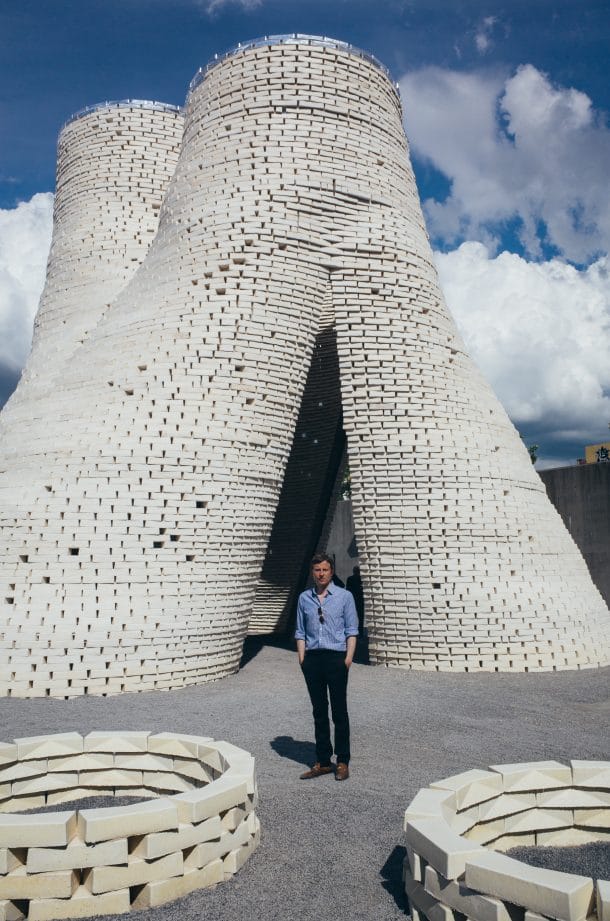
The visible part of the mushroom that lies above the ground is just a tiny fraction of its entire self, hiding below the soil. In the surface below, the mushrooms quickly grow thread like roots called mycelium. Researchers just developed ways to use these roots to create different materials, one of which were the mushroom bricks.
The idea was initiated by a leading biomaterials company called Ecovative. The company creates safe, healthy, and sustainable bioproducts enabling customers to meet their design and production needs while maintaining sustainability. The company has worked extensively on developing alternate uses of mycelium.
The 40-foot mushroom tower, called the ‘Hy-Fi’ was constructed in the courtyard of MoMA PS1, New York which is one of the oldest and largest contemporary art institutions of the United States. The design of the tower was a part of MoMA’s Young Architects program, centered on using organic, biodegradable bricks.
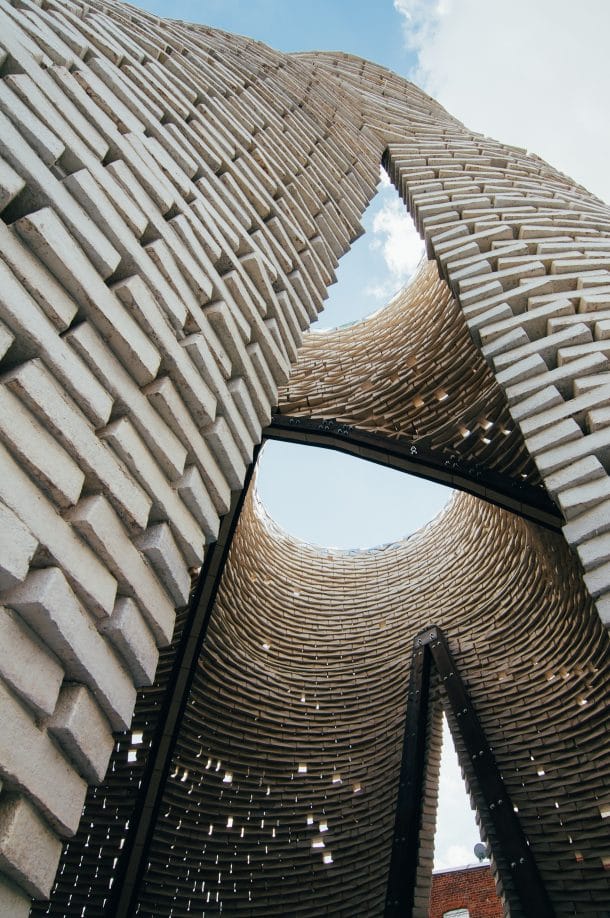
The company interacted with a team of structural engineers to design a structure capable of sustaining the most weight after rigorous testing. The 10,000 bricks used for the 40-foot tower were grown in three separate molds. Molds were filled with organic matter infused with spores, which was transformed into a viable brick in five days. The process was found to be cheap and efficient.
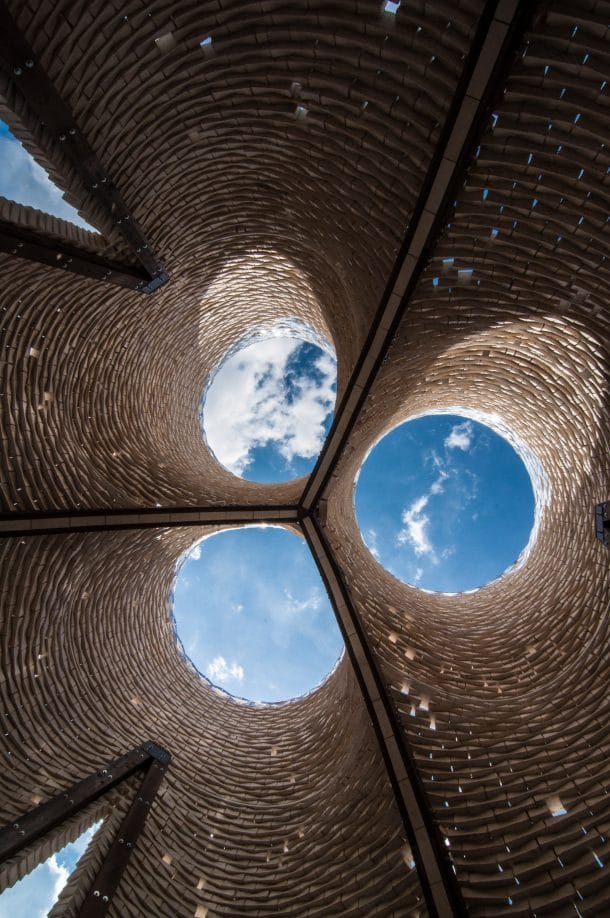
If compared with concrete, the mushroom brick can only sustain a compressive strain of 30 psi as opposed to a minimum of 4000 psi by a concrete block. Though, it is not stronger than concrete, yet, the mushroom brick is significantly lighter than the latter as the former weighs only 43 kg/m³ while the latter weighs about 2400 kg/m³. The low density of the mushroom brick makes it useful for areas that do not require much support, serving as both an insulator and support for interior walls. The tower was designed to disappear in just 60 days. Therefore, by the end of summers in 2014, the structure was slowly disassembled, some of which was composted in the small garden on-site that formed the base of this structure.
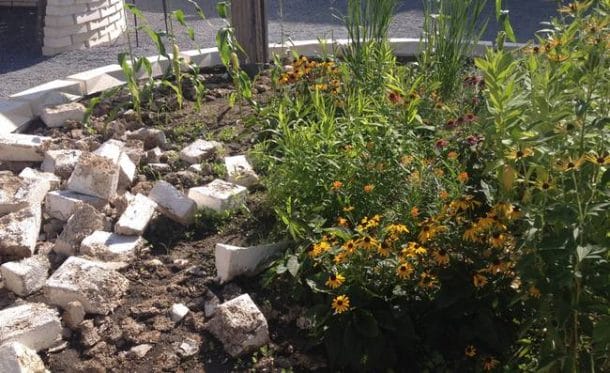
The bricks, however, are very durable capable of maintaining their performance after three years of weathering, which was tested under an accelerated aging. One of the designers of the tower at The Living, David Benjamin commented,
“After three years of accelerated aging the material performed exactly the same as it did originally.”
The material is fire resistant and can be molded into any shape required, thus making it perfect to be used as packaging material. The efficient manufacturing process of the mycelium materials is one of their biggest advantages, especially considering the carbon neutrality of the material.
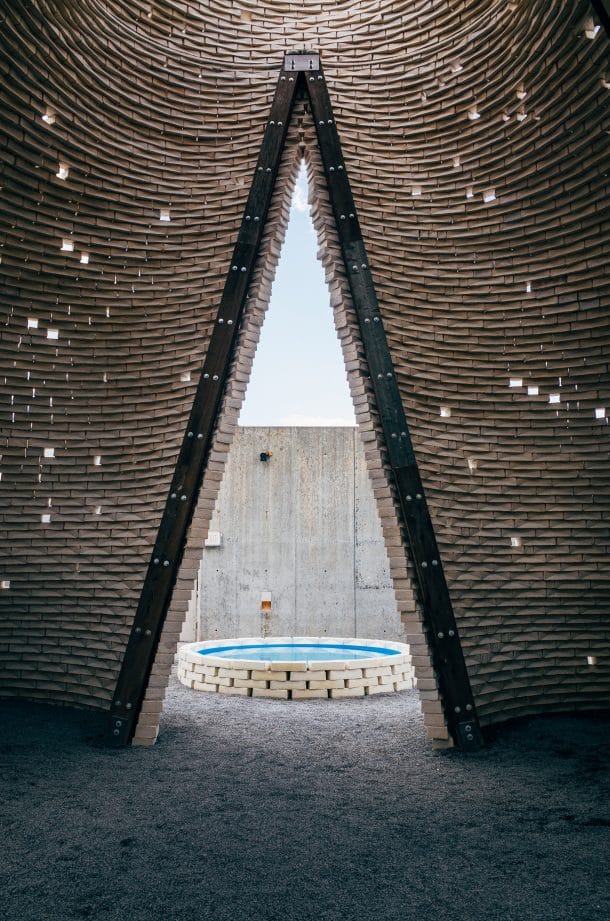
The technology supporting biomaterials like mushrooms for building sustainable structures has not yet fully matured but is a significant step forward in saving the planet from the threat of global warming.
Here is a video of how the unusual tower was made

